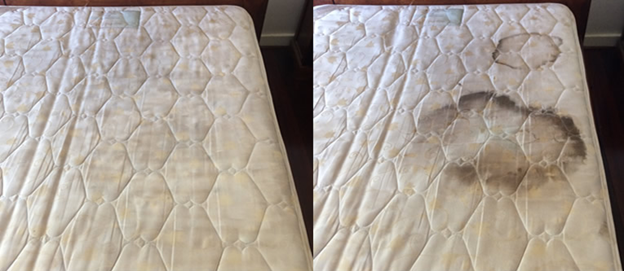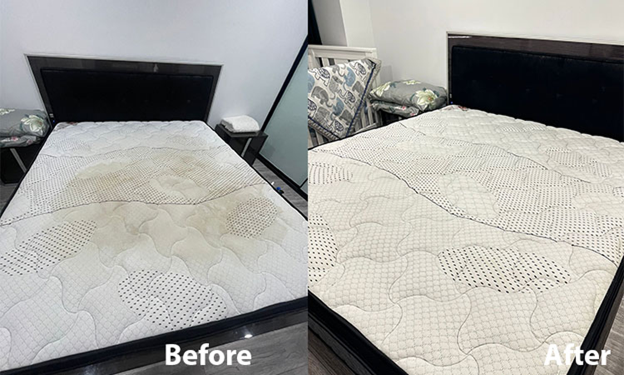
1. Remove Bedding and Pillowcases
- Start by stripping your bed of all bedding: sheets, blankets, pillows, and any mattress protectors.
- This will expose the mattress and give you easy access to all areas.
2. Vacuum the Mattress
- Vacuum Thoroughly: Use a vacuum cleaner with an upholstery attachment to vacuum the entire surface of the mattress. This helps remove dirt, dust, dead skin cells, and any allergens.
- Focus on Seams and Edges: Pay extra attention to the seams, corners, and edges, as dust and debris tend to collect there.
- Flip the Mattress: If your mattress is double-sided, flip it over and vacuum the other side as well.
3. Pre-Spray the Mattress with Cleaning Chemical
Before vacuuming or steaming, apply a mattress cleaning chemical pre-spray to any stained or heavily soiled areas. This pre-spray helps break down dirt, oils, and grime, making the steam cleaning process more effective. Allow the solution to sit for a few minutes to loosen the dirt and stains.
4. Spot Clean Stains
- If you have specific stains on the mattress, you can spot clean them with a small amount of upholstery cleaner or a mild detergent solution.
- Mix a small amount of detergent with water and blot the stain with a clean cloth.
- Allow it to sit for a few minutes, then blot it dry with a towel.
- Tip: For blood stains or other protein-based stains, use cold water to avoid setting the stain.
5. Prepare the Steam Cleaner
- Fill the Tank: Fill your steam cleaner’s water tank with hot water (not boiling). Some machines may also require a cleaning solution. Check the manufacturer’s guidelines to make sure you’re using the correct cleaning agent if needed.
- Attach the Upholstery or Mattress Cleaning Tool: If your steam cleaner has a specific tool for mattresses or upholstery, attach it. If not, a handheld steamer with a nozzle or brush attachment will work.
6. Begin Steam Cleaning the Mattress
- Start from the Top: Begin steaming from the top of the mattress, working your way down. Hold the steam cleaner a few inches away from the surface of the mattress.
- Move Slowly: Move the steam cleaner slowly in a back-and-forth motion to allow the steam to penetrate deeply into the fabric. Steam cleaning will help eliminate dust mites, allergens, and bacteria.
- Focus on Stains: If you see any stains, you can spend a bit more time focusing the steam on those areas. For stubborn stains, gently scrub the area with a soft brush after steaming.
- Don’t Over-Wet the Mattress: Be cautious not to oversaturate the mattress with steam. A little moisture is enough to clean the fabric, but too much water can damage the mattress.
7. Dry the Mattress
- Wipe Away Excess Moisture: After steaming, use a clean towel to blot away any excess moisture from the mattress. This helps prevent mold or mildew growth.
- Air Dry the Mattress: Allow the mattress to air dry thoroughly before putting any bedding back on. Place the mattress in a well-ventilated area. If possible, let it sit near a fan or open window to speed up the drying process. Avoid using your mattress until it’s completely dry to prevent moisture from lingering.
- Drying Time: It may take several hours (or longer, depending on your mattress’s thickness) for the mattress to fully dry. If you’re in a hurry, you can use a hairdryer on a low setting to speed up the drying process in small areas.
8. Optional: Deodorize with Baking Soda
- Sprinkle Baking Soda: After steaming, sprinkle a generous amount of baking soda across the entire surface of the mattress. This helps to absorb any lingering odors.
- Let it Sit: Let the baking soda sit for a few hours (or overnight, if possible) to allow it to absorb odors and moisture.
- Vacuum Again: After the baking soda has had time to work, vacuum the mattress again to remove the baking soda.

